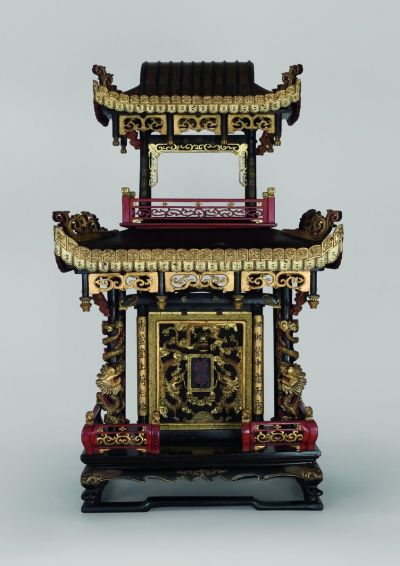
Home altar for holding imperial letters patent (in Chinese: gao ming)
| Accession Nr.: | 2574 |
|---|---|
| Type: | furniture; religious or cult object |
| Date of production: |
Late 18th century – first half of the 19th century
Qing dynasty |
| Place of production: | |
| Acquisition: | collection of Ferenc Hopp |
In the houses of Chinese noblemen, the main hall was the location of the home altar, in front of which sacrifices would be offered to the family ancestors and to all the spirits of the house.
In the middle, a dragon (symbol of the emperor) is coiled around the altar inscription: 诰命 – “Letters patent granting title”. The front panel of the altar is flanked by columns fully inscribed with couplets (in Chinese: duilian). The two rear and two front columns are also inscribed with New Year’s couplets: “May imperial benevolence multiply the renewed support of the ancestors. / May imperial grace radiate through favourable military communiqués." and “The valiant soldiers are showered with the emperor’s goodwill, / and his gratitude towards the esteemed parents is infinite.”
This multi-level home altar was part of Ferenc Hopp’s personal collection.
In the middle, a dragon (symbol of the emperor) is coiled around the altar inscription: 诰命 – “Letters patent granting title”. The front panel of the altar is flanked by columns fully inscribed with couplets (in Chinese: duilian). The two rear and two front columns are also inscribed with New Year’s couplets: “May imperial benevolence multiply the renewed support of the ancestors. / May imperial grace radiate through favourable military communiqués." and “The valiant soldiers are showered with the emperor’s goodwill, / and his gratitude towards the esteemed parents is infinite.”
This multi-level home altar was part of Ferenc Hopp’s personal collection.